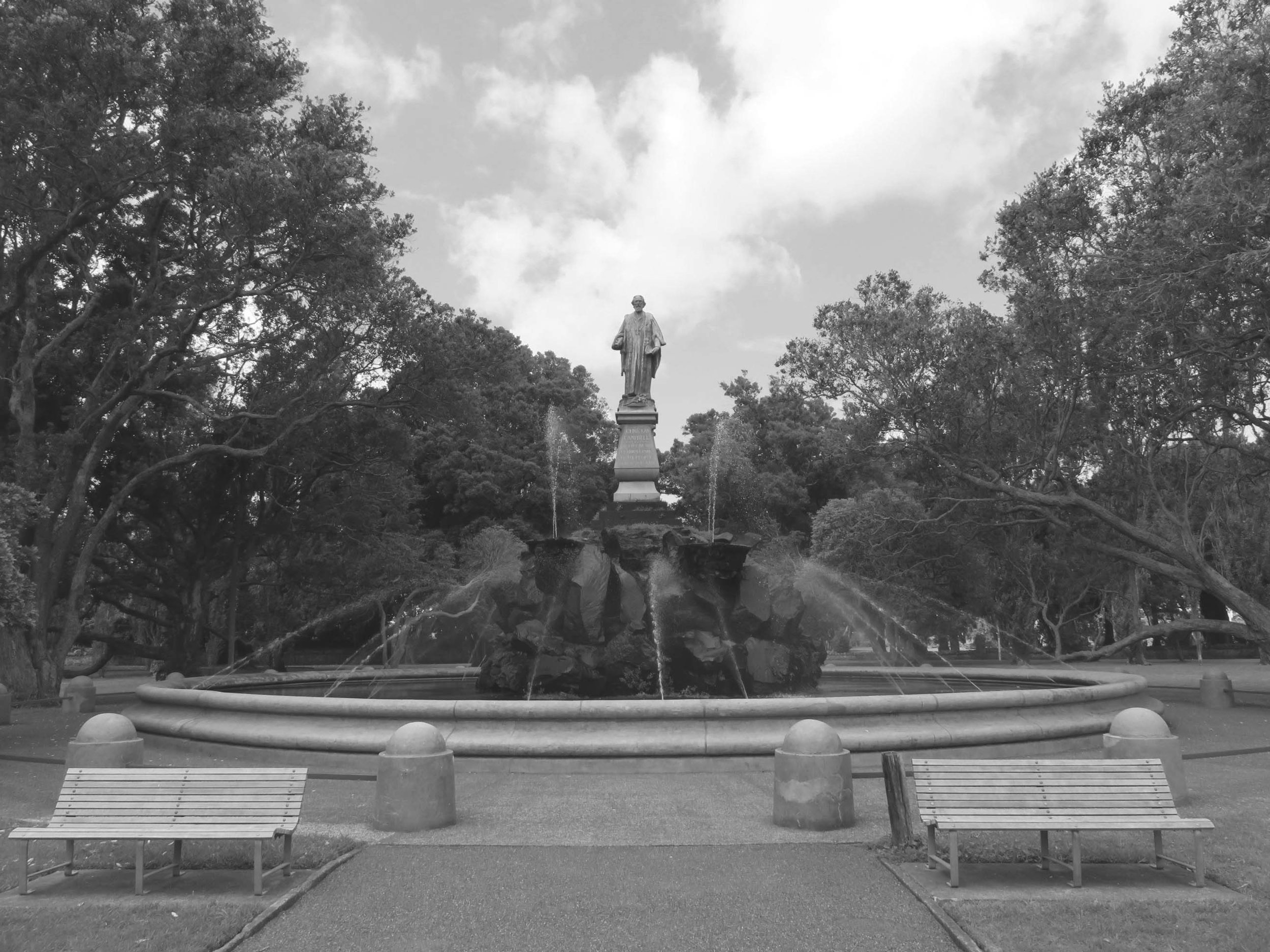Cornwall Park's Campbell Crescent upgrade
Auckland’s Cornwall Park is a 172-hectare parkland gifted to the people of New Zealand by Sir John Logan Campbell in 1903. The Sir John Logan Campbell statue and fountain was one of the earliest features of Cornwall Park to be constructed; and it was dedicated in 1906. Campbell Crescent was envisioned by Austin Strong, the original landscape architect of Cornwall Park, as the main arrival to the newly established parkland and the beginning of the approach to Maungakiekie.
Improvements to Campbell Crescent and the Sir John Logan Campbell Fountain are one of the first projects to be implemented from the award-winning Cornwall Park Master Plan, developed by Nelson Byrd Woltz Landscape Architects in collaboration with Boffa Miskell for the Cornwall Park Trust Board.
Like the overall Master Plan, the work on Campbell Crescent begins with the protection and enhancement of built and planted heritage features, some of which have been obscured or degraded over the past century since the Park’s founding.
The John Logan Campbell fountain is the blue circle in the middle of the Campbell Crescent plan.
At the time of construction, the statue and fountain stood tall in a landscape of open fields and views in all directions; but the city has grown up around the Crescent. Mature trees obscure key sight lines and the now-busy roads are difficult for pedestrians to negotiate, limiting the ability of this 2.7-hectare site to function as an entrance to the wider park.
The new design seeks to restore the visibility and prominence of the Sir John Logan Campbell statue and fountain, and to restore Campbell Crescent as a vital landmark and the main point of arrival to Cornwall Park.
Meg Kane, landscape architect at Boffa Miskell, says: “The idea is to re-establish Campbell Crescent as a ‘welcome mat’ when arriving from the Manukau and Market Road side. This will be achieved through the construction of new pathways, signage, large ornamental garden beds and a new avenue of native trees which have replaced the old poplars.”
Kane worked on the planting design alongside Cornwall Park Nursery, and with review by Chloe Hawkins from Nelson Byrd Woltz.
“The grand idea for the planting has been to celebrate the beauty and diversity of our native plants through the creation of large sweeping planting beds which frame the view to the Campbell fountain from Manukau Road. These planting beds will be highly visible and help to raise the profile of the statue and the crescent,” says Kane.
The garden bed layout reflects the symmetry of the overall composition. Two wings of planting at the North and South ends of Manukau Road ground and frame the statue and fountain. A collar of planting has been designed around the circular stone wall to draw attention to, and celebrate, the statue and fountain as the centrepiece of the display.
The John Logan Campbell statue and fountain on Campbell Crescent in Auckland's Cornwall Park.
Highlights of the planting scheme include:
● Masses of texture and seasonal colour from flowering groundcovers, shrubs, and elegant grasses.
● Plant mixes selected to create a rich tapestry of planting throughout the site, which changes depending on the location of the viewer. The plant species provide an example of how natives can successfully be arranged in a garden setting, and include some rarely seen shrubs and flowering plants not common in cultivation.
● Ferns, lush groundcovers and mosses will slowly accumulate over the central rock feature, a move which harks back to the original historic design.
● The design maximises the experiential qualities of the planting, and visitors are given a chance to interact with the native plants as they progress through the site.
● The planting design has been crafted to present the best of New Zealand in respect to the cultural and natural heritage of our country.
New seating is included the plan, and this also represents a jumping-off point for the rest of the park.
“We have created bespoke seating and bins that will become a point of difference for the park,” says Kane. “This furniture will be prototyped in Campbell Crescent, and eventually rolled out to the wider park, to replace the variety of furniture currently used.”

